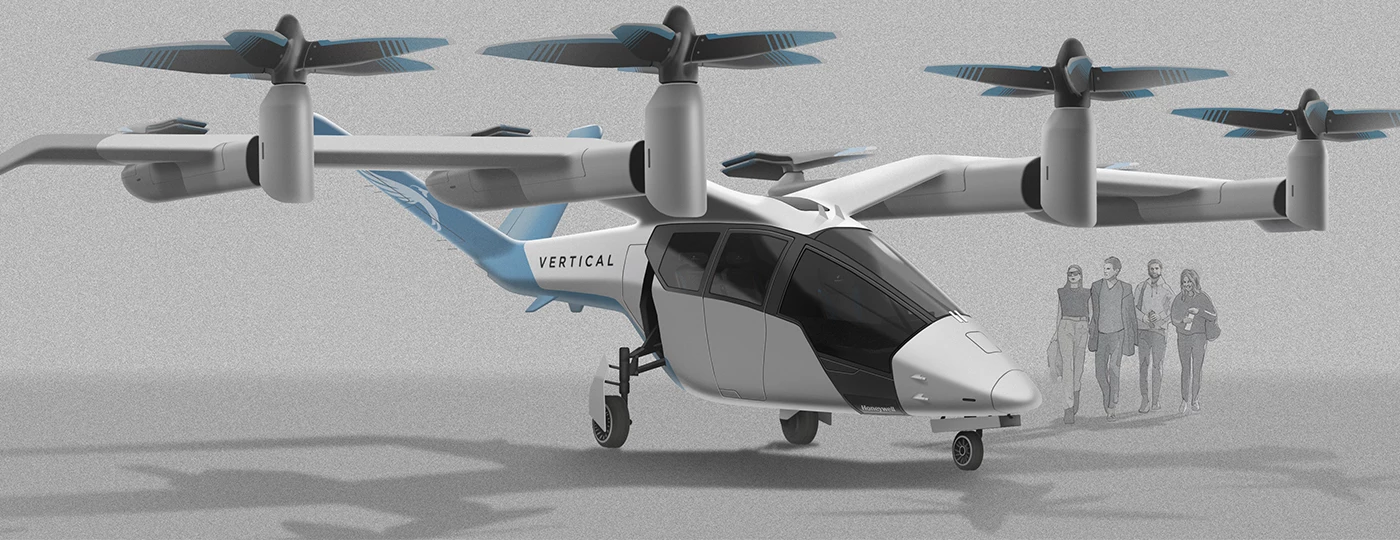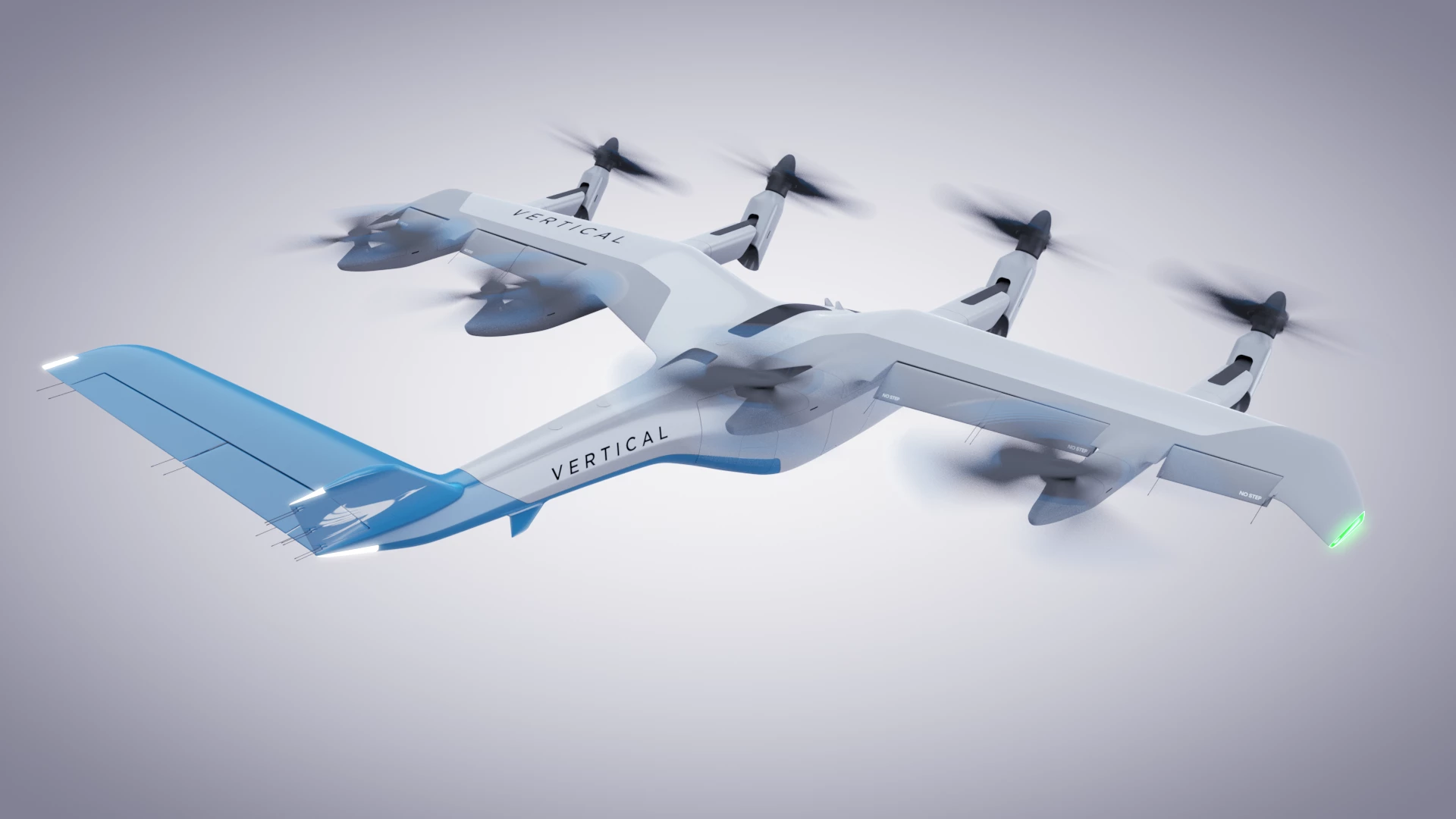Moving on from the squat, chunky Seraph and its basic manned multirotor design, Britain's Vertical Aerospace has released designs for an upcoming five-seat tilt rotor air taxi it's calling the VA-1X that can take advantage of efficient winged flight.
The design renders show a handsome electric aircraft with a V-tail and a 15-meter-wide (49-ft) wing supporting eight rotors. The front four rotors are capable of tilting from a vertical VTOL orientation to face forward for level flight, and the rear rotors are a two-piece design that can operate as four-blade rotors when in use, but fold away into a stacked, longitudinally oriented pair to reduce drag flying on the wing.
Likewise, the landing gear retracts and tucks away neatly into the body of the aircraft to further reduce drag, and control surfaces on the wings and tail should offer a fairly standard airplane flying experience once enough forward motion is established.
Vertical Aerospace claims a cruise speed up to 150 mph (241 km/h) for the VA-1X, and its lithium-ion battery pack will enable a range up to 100 miles (161 km) between charges. With a length of 13 m (42.7 ft), it's capable of landing on regular helipads, and the company says its small rotors will make it some 30 times quieter than a helicopter.

The complex dance of transitioning from VTOL lift and hover to winged flight will be managed by software; the VA-1X will be entirely fly-by-wire, with the pilot's control inputs interpreted by a computer. The flight control system will be supplied by Honeywell, a company that seems to be getting fairly heavily involved in eVTOL systems as it's popping up more and more often as a partner to these air taxi startups.
Vertical Aerospace is backing away from some of its competitors' claims that air taxi travel will cost about the same per mile as a ground-based Uber ride. "Prices for air taxi services," reads a press release, "are initially expected to be between a helicopter flight and a private car, and will decrease as adoption grows."

In terms of the timeline, Vertical Aerospace says it'll begin building a prototype aircraft shortly, with flight testing slated for 2021. The company expects to have it certified "to the same safety standards as commercial airlines" by 2024 and in service shortly thereafter, and says it's "set to be the world first certified winged all-electric Vertical Take-Off and Landing (eVTOL) aircraft."
That's an interesting claim, given that companies like Joby Aviation and Lilium are well ahead of VA's schedule with multiple prototypes up and running and plenty of test hours already complete, but anything is possible until somebody gets one across the line.
We've reached out to the VA team and hope to bring you an interview on this machine soon.
Source: Vertical Aerospace










